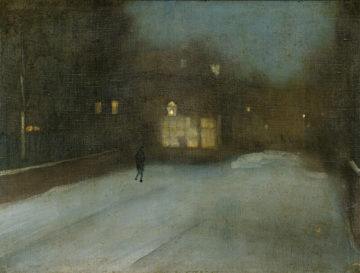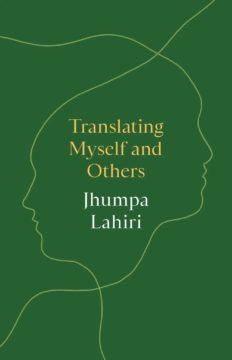Category: Recommended Reading
The Irreconcilable Fanny Howe
Jamie Hood at The Baffler:
 Howe’s latest book, London-rose: Beauty Will Save the World, is a strange, changeable artifact. As does much of her work, it luxuriates in formal and generic plasticity: it is not poetry, exactly, but nor is it precisely prose. London-rose might be more usefully regarded as a consortium of fragments—historical apocrypha, lists, philosophic and monastic citations, and other ephemera—which are loosely gathered in the folds of a skeletal plot concerning an unnamed and structurally anonymized female pencil pusher. Howe called 2020’s Night Philosophy her “last” book, and to give credit where it is due, London-rose isn’t technically “new.” The manuscript is traceable in some form to the early 1990s, the decade during which Howe was in the thick of a sequence of five novels she has said are as near to a personal biography as she wishes to get. (They were collected in an omnibus as Radical Love by Nightboat in 2006, and the last of them—Indivisible—is being reissued in tandem with the publication of London-rose.)
Howe’s latest book, London-rose: Beauty Will Save the World, is a strange, changeable artifact. As does much of her work, it luxuriates in formal and generic plasticity: it is not poetry, exactly, but nor is it precisely prose. London-rose might be more usefully regarded as a consortium of fragments—historical apocrypha, lists, philosophic and monastic citations, and other ephemera—which are loosely gathered in the folds of a skeletal plot concerning an unnamed and structurally anonymized female pencil pusher. Howe called 2020’s Night Philosophy her “last” book, and to give credit where it is due, London-rose isn’t technically “new.” The manuscript is traceable in some form to the early 1990s, the decade during which Howe was in the thick of a sequence of five novels she has said are as near to a personal biography as she wishes to get. (They were collected in an omnibus as Radical Love by Nightboat in 2006, and the last of them—Indivisible—is being reissued in tandem with the publication of London-rose.)
more here.
Tuesday Poem
In All This Rain
—for Doktor Bruder,
the dachshund
Despite
what is written
about the rain
love is one element
that takes more sense
than any other
to know when
to come in out of.
It rains
sooner or later of course on
everything we bury
And burying a dog
is not
according to experts
supposed to be anything like
as painful
as burying your kin.
They say
think of it as sleep
in which the stars also
all go out at once
the stars that you know
are still up there
but just can’t see.
Sunday, May 22, 2022
Private Notebooks 1914-1916 by Ludwig Wittgenstein – sex and logic
Anil Gomes in The Guardian:
 Ludwig Wittgenstein joined the army the day after his native Austria-Hungary declared war on Russia in August 1914. He had been serving for almost three months when he received word that his brother Paul, a concert pianist, had lost his right arm in battle. “Again and again,” he wrote in his notebook, “I have to think of poor Paul, who has so suddenly been deprived of his vocation! How terrible! What philosophical outlook would it take to overcome such a thing? Can it even happen except through suicide!”
Ludwig Wittgenstein joined the army the day after his native Austria-Hungary declared war on Russia in August 1914. He had been serving for almost three months when he received word that his brother Paul, a concert pianist, had lost his right arm in battle. “Again and again,” he wrote in his notebook, “I have to think of poor Paul, who has so suddenly been deprived of his vocation! How terrible! What philosophical outlook would it take to overcome such a thing? Can it even happen except through suicide!”
Wittgenstein was an unusual philosopher. He became obsessed with the foundations of logic while an engineering student and presented himself to Bertrand Russell in Cambridge, ready to solve all its problems. His intent was to provide an account of logic that was free from paradox and his solution came in the form of the Tractatus Logico-Philosophicus, sent to Russell from the Italian prisoner-of-war camp in which Wittgenstein was held at the end of the first world war.
More here.
Lavender’s Game: Silexan For Anxiety
Scott Alexander in Astral Codex Ten:
 There are dozens of natural supplements that purport to treat anxiety. Most have a few small sketchy studies backing them up. Together, they form a big amorphous mass of claims that nobody has the patience to sift through or care about.
There are dozens of natural supplements that purport to treat anxiety. Most have a few small sketchy studies backing them up. Together, they form a big amorphous mass of claims that nobody has the patience to sift through or care about.
But recently silexan (derived from lavender) has started to stand out of the crowd. Daily Mail had an interview with psychiatry professor Hans-Peter Volz, who said that silexan should be first-line for anxiety, replacing things like SSRIs and Xanax. And a very reputable professional publication within psychiatry, The Carlat Report, published an article and a podcast touting silexan:
Not many treatments in psychiatry have a large effect size. There’s stimulants for ADHD, ketamine for depression . . . and now Silexan for generalized anxiety disorder.
And:
Most [alternative medicine] therapies do not have robust effects, but Silexan is an exception. Consider it in adults with generalized anxiety disorder.
What’s going on?
More here.
Nabokov and Balthus: The Erotic Imagination
Jeffrey Meyers in Salmagundi:
Despite their idiosyncratic characters, the close contemporaries Vladimir Nabokov (1899-1977) and Balthazar (Balthus) Klossowski (1908-2001) had a surprisingly similar background, life, character, art and career. In fact, both author and painter were exceptionally handsome, with elegant manners and regal demeanor, and had sophisticated wit, comic irony, perverse ideas and lubricious work.
Nabokov was born in St. Petersburg. His father, who belonged to the Russian nobility, was a Liberal lawyer, statesman and writer, and a member of Alexander Kerensky’s doomed cabinet in March 1917. In the days before the Revolution the wealthy family took many holidays in Europe, and had fifty full-time servants in their St. Petersburg mansion and their country estate fifty miles from the capital.
Balthus also had a cosmopolitan Slavic background. His maternal grandfather Abraham Spiro, born in Russia, was a Jewish cantor and two of his thirteen children became opera singers. (Nabokov’s wife was Jewish and his son Dmitri became an opera singer in Milan.)
More here.
To End War, We Need To Understand Its Origins, Evolution And Causes
Michael L. Wilson and Richard W. Wrangham in Monkey Business:

In a recent opinion piece for Scientific American, John Horgan writes “Ending war won’t be easy, but it should be a moral imperative, as much so as ending slavery and the subjugation of women. The first step toward ending war is believing it is possible.” As part of his argument he declared that “far from having deep evolutionary roots, [war] is a relatively recent cultural invention.” We cherish the goal of ending war, but regard the claim of war being independent of our evolutionary past as unjustified, irresponsible and improbable. It is possibly based on a misunderstanding of what it means for a behavior to have evolutionary roots, but regardless of its derivation, we see it as dangerous. The problem is that if Horgan’s view prevails, we close our minds to potentially important contributions towards understanding the causes of wars.
More here.
All Male Cats Are Named Tom: Or, the Uneasy Symbiosis between T. S. Eliot and Groucho Marx
Ed Simon in JSTOR Daily:
 In 1961 a letter with a Royal Mail postmark arrived at 1083 North Hillcrest Road, Beverly Hills. Fan mail sent to this modernist estate amidst the California scrub were not uncommon. After all, it was the home of Julius “Groucho” Marx, the visionary leader of the fraternal comedic group. This particular note had a return address of 3 Kensington Court Gardens, a continent and an ocean away.
In 1961 a letter with a Royal Mail postmark arrived at 1083 North Hillcrest Road, Beverly Hills. Fan mail sent to this modernist estate amidst the California scrub were not uncommon. After all, it was the home of Julius “Groucho” Marx, the visionary leader of the fraternal comedic group. This particular note had a return address of 3 Kensington Court Gardens, a continent and an ocean away.
Groucho Marx had no shortage of fans, as the Marx Brothers revolutionized American comedy in films such as Duck Soup, A Night at the Opera, and, notably, Horse Feathers, in which Groucho plays a college dean, with the mockingly patrician name Quincy Adams Wagstaff. Overseeing an assemblage of pompous, mortar-boarded, gown-wearing academics who dance and sing, Wagstaff says “I don’t know what they have to say/It makes no difference anyway.” It’s an “anarchic expression of distrust of any form of social or political organization,” according to Leonard Helfgott in an essay from Jews and Humor, and shows exactly how the Brothers went about their business of puncturing pretension.
More here.
Mindfulness Hurts. That’s Why It Works
Arthur C. Brooks in The Atlantic:
 Some years ago, a friend told me that his marriage was suffering because he was on the road so much for work. I started counseling him on how to fix things—to move more meetings online, to make do with less money. But no matter what I suggested, he always had a counterargument for why it was impossible. Finally, it dawned on me: His issue wasn’t a logistics or work-management problem. It was a home problem. As he ultimately acknowledged, he didn’t like being there, but he was unwilling to confront the real source of his troubles.
Some years ago, a friend told me that his marriage was suffering because he was on the road so much for work. I started counseling him on how to fix things—to move more meetings online, to make do with less money. But no matter what I suggested, he always had a counterargument for why it was impossible. Finally, it dawned on me: His issue wasn’t a logistics or work-management problem. It was a home problem. As he ultimately acknowledged, he didn’t like being there, but he was unwilling to confront the real source of his troubles.
Many of us, even if we don’t travel for work, do something similar by avoiding spending time in the home of our own mind. If being fully present—or in the parlance of modern meditators, being mindful—is boring, or stressful, or sad, or scary, you’re not going to want to do it very much. You can have a more pleasant time being psychologically out of town, as it were.
But you should work to be more mindful anyway. As I told my friend, he’d be better off facing the problems in his marriage and trying to solve them, rather than living in a hotel off the interstate five days a week. Similarly, avoiding mindfulness will make the feelings you are avoiding worse, not better. Dealing with them is a more rewarding, if perhaps more daunting, strategy.
More here.
Pandit Shiv Kumar Sharma (1938 – 2022) Indian Classical Musician and Santoor Player
Alexander Toradze (1952 – 2022) Classical Pianist
Vangelis (1943 – 2022) Composer And Songwriter
Saturday, May 21, 2022
Sculpting History
Emilie Bickerton in Sidecar:
Images one after the other, combining clips from films and newsreels of the 1950s and 60s, including some we remember from the cinema, and then, in the next frame, an unknown shot of a woman wearing an apron sitting in her kitchen talking about her daily routine, or of children perched on the edge of a sandpit recounting their dreams from the night before. Here we are in a typical sequence from Retour à Reims (fragments), the fourth feature by Jean-Gabriel Périot, which employs the filmmaker’s signature method to survey its subject – in this case, the experiences of women and the working class in post-war France. Périot works by assembling a vast array of visual documents that he has collected, like a curator arranging a new hanging in a gallery to offer a fresh perspective on an artist’s oeuvre.
Since Périot’s early shorts of the 2000s, made when he worked in the multimedia department of the Pompidou, he has honed a distinctive approach that dispenses with many of the familiar attributes of the documentary form. Much of his work begins in the archives and ends in the editing studio. Périot spends years – seven in this case – researching and gathering material on a chosen subject without, he says, an end in mind, only questions that need answers, before intricately weaving them together. The results so far have been impressive, producing an original, eclectic oeuvre that includes his Une jeunesse allemande (2015), an important study of the far left in 1970s Germany and their relationship with the mass media.
More here.
Politics and the Price Level
 Andrew Yamakawa Elrod in Phenomenal World:
Andrew Yamakawa Elrod in Phenomenal World:
In 1959, the leaders of the Organization for European Economic Cooperation (OEEC, now the OECD) appointed a Group of Independent Experts “to study the experience of rising prices” in the recent history of the advanced capitalist countries. Between the end of World War II and the termination of the Korean War conflict, economic planners had tolerated rising prices as an insurmountable consequence of postwar reconstruction and war-induced commodity speculation. These governments expected inflation to end as economies readjusted following the stalemate in Korea. “In the event, however,” the Group of Independent Experts wrote in their final report, “rising prices proved to be a continuing problem.”
The OECD report classified four causes to the inflation of the 1950s: rising wages, monopolistic pricing, excess demand, and what they called “special prices”—those influenced, for example, by foreign governments, bad harvests, or the lifting of government price controls.
At a moment when inflation control is back on the agenda, it is worth observing just how little consensus existed—during a period remembered for its supposed social cohesion and intellectual conformity—on these ostensibly technical concerns. By 1961, when the study group released its final report, its members were not even able to agree on concrete findings regarding the causes of inflation.
More here.
Armageddon Time: A New York Childhood in the Crucible of American History
Richard Brody in The New Yorker:
 I’m not at the Cannes Film Festival, but a few days ago the festival came to me, at a New York screening of a movie that premièred today at Cannes. The film is James Gray’s “Armageddon Time,” which is of local and national interest, and which makes the connection between the local and the national its very subject. It’s an essentially autobiographical film, set in 1980, in the Queens neighborhood where Gray grew up, and it’s centered on a crucial turn of the historical screw. The movie’s big idea is that the racist and xenophobic political madness that has overtaken the United States in the Trump era has its roots in Donald Trump’s home turf of Queens.
I’m not at the Cannes Film Festival, but a few days ago the festival came to me, at a New York screening of a movie that premièred today at Cannes. The film is James Gray’s “Armageddon Time,” which is of local and national interest, and which makes the connection between the local and the national its very subject. It’s an essentially autobiographical film, set in 1980, in the Queens neighborhood where Gray grew up, and it’s centered on a crucial turn of the historical screw. The movie’s big idea is that the racist and xenophobic political madness that has overtaken the United States in the Trump era has its roots in Donald Trump’s home turf of Queens.
In “Armageddon Time,” the personal is tragically political, and vice versa. The movie is a coming-of-age story in which the young protagonist’s maturation comes at an unbearably high price, at the intersection of privilege and guilt; it’s both a horror story and a tale of a debt that can never be paid; it’s a New York secular-Jewish story that resounds with a quasi-Biblical weight of moral responsibility. Among recent films, “Armageddon Time” most resembles a cross between the Safdie brothers’ “Good Time” (also set in Queens) and Paul Thomas Anderson’s “Licorice Pizza”: like “Good Time,” its overwhelming subject is the presumption and the power of white privilege, and, like “Licorice Pizza,” it delves into the infinitesimal details of memory to rediscover the spirit of the past.
More here.
Saturday Poem
Tracks
Night, two o’clock: moonlight. The train has stopped
in the middle of the plain. Distant bright points of a town
twinkle cold on the horizon.
As when someone has gone into a dream so far
that he’ll never remember that he was there
when he comes back to his room.
As when someone goes into a sickness so deep
that all his former days become twinkling points, a swarm,
cold and feeble on the horizon.
The train stands perfectly still.
Two o’clock: full moonlight, few stars.
by Tomas Tranströmer
from A Book of Luminous Things
Harvest Books, 1996
Jhumpa Lahiri Leaves Her Comfort Zone
Benjamin Moser in The New York Times:
 Last fall, I made my first visit to London since the start of the pandemic. A routine commuter flight from Europe felt like a great adventure, and once I’d jumped through the bureaucratic hoops, I was excited to arrive. But the city looked disappointingly unchanged after everything the world had gone through. The only thing that really shocked me was something I hadn’t expected: hearing people speaking English. After two years away from it, I had never felt so moved to encounter my own language.
Last fall, I made my first visit to London since the start of the pandemic. A routine commuter flight from Europe felt like a great adventure, and once I’d jumped through the bureaucratic hoops, I was excited to arrive. But the city looked disappointingly unchanged after everything the world had gone through. The only thing that really shocked me was something I hadn’t expected: hearing people speaking English. After two years away from it, I had never felt so moved to encounter my own language.
Hearing a mother tongue is like stepping into a warm bath. But one of the disquieting discoveries that studying foreign languages brings is the awareness that your own can be a trap. By providing a steady drip of prefabricated words and ideas, your only tool for thinking and feeling can just as easily become a tool for not thinking, for not feeling; and when forced to do without those words and ideas, you realize how many of your so-called thoughts are nothing more than clichés grafted onto you by the language with which you grew up. In “Translating Myself and Others,” the Indian American writer Jhumpa Lahiri traces a journey away from the automatisms of English.
When she was 45, Lahiri decided to begin writing in Italian. Her choice was considered mystifying, eccentric: “Why Italian instead of an Indian language, a closer language, more like you?” Yet the whole point, of course, was to be less like her — less trapped by unconscious accretions of unthinking. Italian, for her, was an entirely learned language. “Nothing came to me naturally; I had to pay my dues,” she writes.
More here.
The Letters of Thom Gunn
Dwight Garner at the NYT:
 It was if he’d stepped, steaming, out of a Tom of Finland drawing. “My definition of tit for tat,” he wrote, is: “You lick my tattoo while I handle your nipple.”
It was if he’d stepped, steaming, out of a Tom of Finland drawing. “My definition of tit for tat,” he wrote, is: “You lick my tattoo while I handle your nipple.”
In the summer of 1967, the Summer of Love, a friend came across Gunn in Golden Gate Park, this book tells us in a footnote. It was very hot, and Gunn was otherwise shirtless in a chain mail vest. “There was his hairy chest and then hot metal burning into his skin, his flesh,” the friend reported. “He was trying to look very nonchalant but he was obviously being crucified. It was horrible. But he wouldn’t take it off because it would’ve spoiled the whole look of the thing.”
These details, in general, won’t surprise anyone who kept up with Gunn’s poetry, which was metrically sophisticated and dealt sometimes with earthy topics such as LSD, the Hell’s Angels, sex and its itchy discontents, and gay culture writ large.
more here.
Colm Tóibín on Elizabeth Bishop and Thom Gunn
Mithradites of Fond du Lac
Kent Russell at The Believer:
 A little while ago, I was searching the web for the man who best embodied the dictum “That which does not kill me makes me stronger.” I was looking for someone who thought he’d succeeded in fortifying his inborn weaknesses, who believed he had bunged the holes left by God. I discovered Tim among the self-immunizers. They’re this community of a couple dozen white, Western males who systematically shoot up increasing doses of exotic venoms so as to inure their immune systems to the effects. Many of these men handle venomous snakes for business or pleasure, so there’s a practical benefit to their regimen. A few prefer instead to work their way from snakes to scorpions to spiders, voiding creatures’ power over them. Most seem to be autodidacts of the sort whose minds recoil at the notion of a limitation deliberately accepted—something I sympathized with, being myself an unfinished, trial creature. On their message boards, Tim talked the biggest medicine.
A little while ago, I was searching the web for the man who best embodied the dictum “That which does not kill me makes me stronger.” I was looking for someone who thought he’d succeeded in fortifying his inborn weaknesses, who believed he had bunged the holes left by God. I discovered Tim among the self-immunizers. They’re this community of a couple dozen white, Western males who systematically shoot up increasing doses of exotic venoms so as to inure their immune systems to the effects. Many of these men handle venomous snakes for business or pleasure, so there’s a practical benefit to their regimen. A few prefer instead to work their way from snakes to scorpions to spiders, voiding creatures’ power over them. Most seem to be autodidacts of the sort whose minds recoil at the notion of a limitation deliberately accepted—something I sympathized with, being myself an unfinished, trial creature. On their message boards, Tim talked the biggest medicine.
Their practice of self-immunization has a great old name: mithridatism.
more here.
